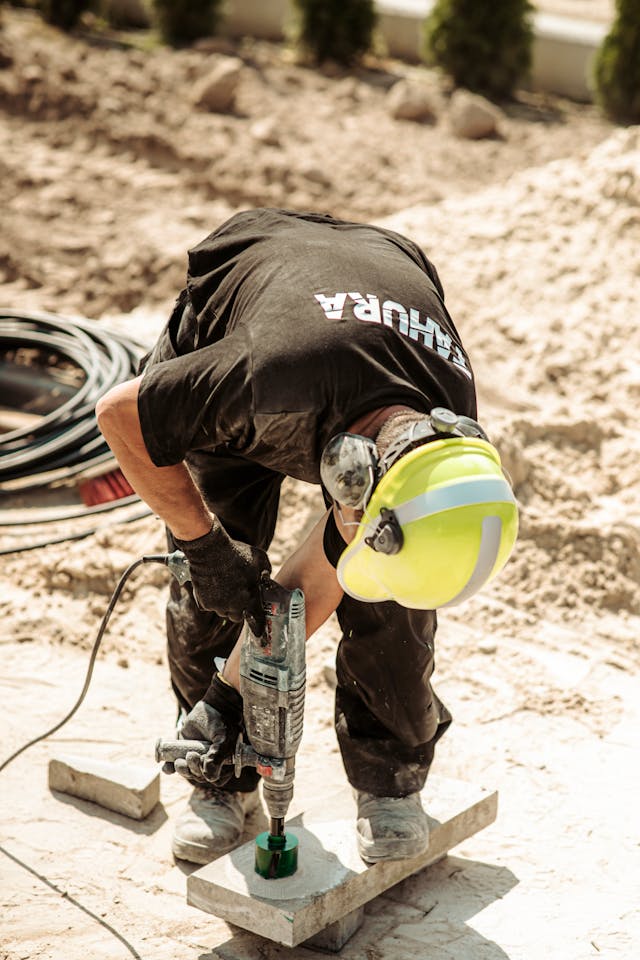Structural connections, like those that serve as the bones of towering skyscrapers, expansion bridges, and tunnel systems, are made possible through extremely tough fasteners. Heavy structural bolts often come to mind, but when connecting parts directly to concrete, stone, brick, and other foundational materials, it’s necessary to create a connection point. This is the main function of construction anchors.
Like fasteners meant for lighter-duty jobs, construction anchors have their own special performance limitations, attributes, and advantages. There is no one-size-fits-all construction anchor. The following overview will help explain the differences and where and when some of the most common types are used.
we delve into the world of construction and infrastructure, spotlighting the indispensable role of anchors as robust fasteners for concrete structures. Navigating through the challenges of securing structures involves more than just bolts and screws; it’s about relying on anchors that can withstand the forces of nature and time. It’s not just about fastening; it’s a strategic choice of the toughest fasteners, ensuring stability and longevity. As we explore anchors as the toughest fasteners for concrete, we unveil a critical component in the construction toolkit—resilient anchors that provide steadfast support, anchoring structures firmly to their foundation. Each anchor becomes a testament to the durability and strength required in the dynamic world of construction, securing the built environment with unwavering stability.
Connecting Steel To Concrete
Wedge Anchors
Wedge anchors secure steel to solid concrete. They are also known as expansion wedge anchors, as they are a variation of conventional expansion anchors. Consisting of a threaded rod with an end clip, and frequently accompanied by a nut and washer, they are actually a fastener assembly. Since they are used for heavy structural parts, such as securing columns, pillars, and footings to concrete, they are meant to be permanent and are made with tough finishes to resist the elements. Galvanized wedge anchors and zinc-plated wedge anchors, for example, are frequently used to guard against the effects of corrosion but are more cost-effective than stainless steel.
Bar Anchors
Bar anchors, often called deformed bar anchors, will attach steel to concrete through a special welding method. They are similar to a weld stud except they lack a head and instead feature dimples along their length. Bar anchors offer reliable load support and will secure tee and bam connections, shear walls, precast columns, as well as steel plates. These anchors are typically made from carbon steel and kept plain.
Connecting Hardware To Concrete
Large Diameter Tapcons
Also called tapcon anchors or tapcon concrete screws, large-diameter tapcons look like a heavy-duty version of a structural screw. They are installed using a special tool called a hammer drill, which is able to drive the fastener tightly into concrete to fix various types of hardware in place. They are often coated or made from stainless steel to resist the formation of corrosion. Large diameter tapcons are most often used in concrete, but they can also be installed into higher density stone and structural blocks.
Drop-In Anchors
When hardware like railings, pipes, or brackets must be mounted directly into concrete, drop-in anchors will facilitate that connection. These anchors provide a connection point for bolts, threaded rods, and similar fasteners. Like tapcons, they require a hammer drill for installation, but unlike tapcons, drop-in anchors should not be installed into any material other than concrete. They are often made from carbon steel and coated with zinc for a reliable combination of strength and resistance to corrosion.
Read: What is a Wedge Wire Filter? Its Features and Applications
Connecting Hardware To Brick And Stone
Expansion Anchors
Expansion anchors are can be used in brick, stone, and concrete. They provide a threaded end point while the embedded end of the anchor expands into the material to provide a tight grip and a high-integrity mounting point. Expansion anchors are categorized as single or double, which indicates whether the anchor has just one or two expansion nuts and whether the expansion area of the anchor is limited to just the end or includes the full length of the anchor. They are typically used for light and medium-duty connections and are finished with zinc to prevent the formation of corrosion.
Lag Shields
Lag shields will provide a connection point in stone, brick, and concrete to accommodate lag bolts. They require pre-drilled holes for installation and are made in both long and short styles. The short styles in particular are made for especially dense masonry to reduce the installation time. They can also be installed in the mortar between stone and brick. Lag shields are often unfinished but made from a zinc alloy for base resistance.
Sleeve Anchors
Sleeve anchors are mostly used in masonry, although they can be installed into brick and concrete. They are fairly versatile anchors. They provide a threaded connection point and are usually sold as a total assembly with a nut and washer. They are most reliable when used to support light and medium loads.


